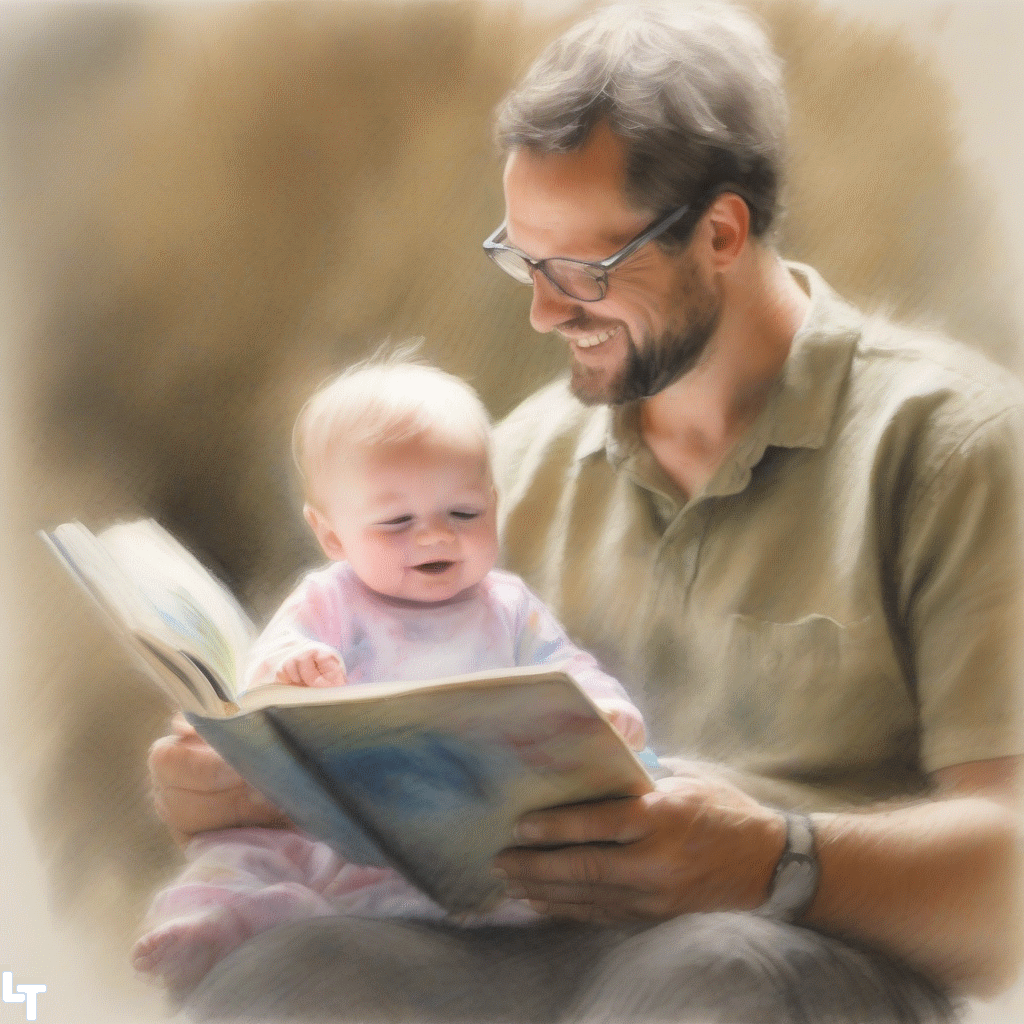The Process of Language Acquisition in Infancy
Discover the fascinating process of language acquisition in infancy, from pre-linguistic communication to language explosion. Explore the stages, factors influencing acquisition, and the remarkable abilities of children within their first five years.

1st Published Dec 9, 2023
Language Acquisition in Children
Language acquisition in infancy is a fascinating process that involves several stages and is influenced by various factors. It's an innate process that all children, regardless of the language their parents speak, are born knowing how to do[1].
Pre-linguistic Stage
The process begins with the pre-linguistic stage, which occurs from birth to approximately 12 months of age. During this stage, infants communicate through nonverbal means such as crying, facial expressions, and body language. They also begin to make cooing and babbling sounds as they experiment with their vocal cords and develop the muscles required for speech. At around 6 months of age, infants begin to recognize their own names and the names of familiar people and objects[5].
Holophrastic or One Word Stage
The next stage is the holophrastic or one-word stage, where children start using single words to express whole thoughts.
Word Spurt Stage
The "Word Spurt Stage" or "Naming Explosion" is a pivotal phase in early childhood language development, usually occurring between 18 and 24 months. During this time, a child's vocabulary rapidly expands from about 50 to over 200 words, astonishing parents with the speed at which new nouns connected to daily experiences are acquired. Although pronunciation may be imperfect, understanding of language and its use for expressing needs advances significantly. Crucial to this developmental leap is social interaction, with imitation and repetition via engagement with caregivers and peers being essential. Strategies to further encourage language acquisition include providing a diverse linguistic environment, reading, singing, and direct conversation with the child. Nevertheless, it's essential to recognize that the timing and rate of vocabulary growth can vary widely among children.
Language Explosion Stage
This is followed by the language explosion stage, typically around age 3, when children begin to rapidly acquire new vocabulary and grammatical structures. They become more adept at expressing complex ideas and emotions through language. At this stage, children may begin to ask questions and use language for problem-solving and negotiation.
The school-age stage
The school-age stage begins around age 5, when children begin to refine their language skills and learn more complex grammar rules[5].
The school-age stage marks the period when children, typically starting around age 5, hone their pre-existing language abilities and venture into understanding and using more sophisticated aspects of language. This stage is characterized by several developments in a child's linguistic capabilities:
- Advancement in Grammar and Syntax: Children's grasp of grammar becomes more refined, and they start to use complex sentence structures. They can understand and express ideas using a variety of verb tenses, conjunctions, and more nuanced syntax.
- Vocabulary Growth: There is a significant increase in the breadth and depth of vocabulary. Children at this stage are exposed to new words across different contexts, such as school subjects, peer interactions, and media.
- Reading and Writing Skills: As children engage with education, they develop literacy skills. They learn to read and comprehend texts at various levels of complexity and begin to write with purpose and structure.
- Pragmatic Language Skills: There's a greater understanding of the social uses of language, including the ability to use language for different functions (e.g., persuading, informing, questioning) and to modify language according to the social context or the listener's needs.
- Improved Language Processing: Children's capacity to process linguistic information becomes more efficient, allowing for quicker and more nuanced understanding and production of language.
- Cognitive Relationships with Language: School-aged children start to understand metaphors, idioms, and more abstract language, reflecting the deeper cognitive processes at play in language comprehension.
Given the classroom setting and increased social interactions, this stage is crucial for language socialization, where children learn the norms and patterns of language use within their culture. It’s also a time when individual differences in language ability can become more apparent. Teachers and caregivers often play a significant role in supporting language development during this stage by providing rich, varied language experiences and addressing any language difficulties early on.

Factors That Influence Language Acquisition
Several factors influence language acquisition. These include the child's motivation, support at home, prior linguistic knowledge, learning environment, and teaching methods[6]. The child's social environment, perceptual abilities, conceptual understanding, and linguistic skills also play a role[9].
It's important to note that these stages are not set in stone and can overlap or vary depending on individual differences and environmental factors. Additionally, children who are exposed to multiple languages may follow a different pattern of language development[5]. Despite the complexity of languages, children master them within their first five years, and even before that, as a 3.5- to 4-year-old, they are pretty good at engaging in conversations[10].
Citations:
[1] https://www.verywellfamily.com/how-do-children-learn-language-1449116
[2] https://www.indeed.com/career-advice/career-development/stages-of-language-development
[3] https://www.child-encyclopedia.com/language-development-and-literacy/according-experts/factors-influence-language-development
[4] https://www.scientificamerican.com/article/how-babies-learn-language/
[5] https://www.peptalkradio.com/stages-of-language-development/
[6] https://www.whitbyschool.org/passionforlearning/9-factors-that-influence-language-learning
[7] https://web.mnstate.edu/houtsli/tesl551/LangAcq/page1.htm
[8] https://study.com/learn/lesson/stages-language-development-overview-chart.html
[9] https://www.slpcorner.com/blog-native/5-factors-that-influence-childrens-language-development
[10] https://knowablemagazine.org/article/mind/2020/how-babies-learn-language
[11] https://raisingchildren.net.au/babies/development/language-development/language-3-12-months
[12] https://mangolanguages.com/resources-articles/what-factors-influence-language-learning/
[13] https://speechblubs.com/blog/children-language-acquisition-stages/
[14] https://www.nidcd.nih.gov/health/speech-and-language
[15] https://akorbi.com/blog/language-learning-in-children-top-4-factors-for-success/
[16] https://bookdown.org/nathalieyuen/understanding-the-whole-child/language-development-in-infancy-and-toddlerhood.html
[17] https://childdevelopment.com.au/resources/child-development-charts/stages-of-language-development-chart/
[18] https://www.psychologydiscussion.net/social-psychology-2/language/language-development-of-a-child-8-main-factors/1392
[19] https://raisingchildren.net.au/babies/development/language-development/language-development-0-8
[20] https://www.atlantis-press.com/article/125932600.pdf
[21] https://www.linguisticsociety.org/resource/faq-how-do-we-learn-language
aLEXiS AI is an Artificial Intelligence Writing Assistant
KREA is the AI Artist
SHiNER is a Human who politely asks AI to help him.
"All hail our future AI Overlords!"





Comments ()